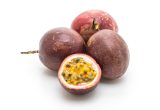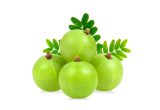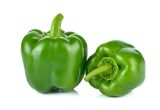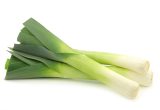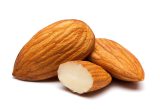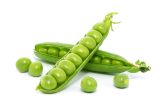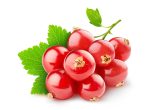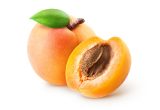Watercress

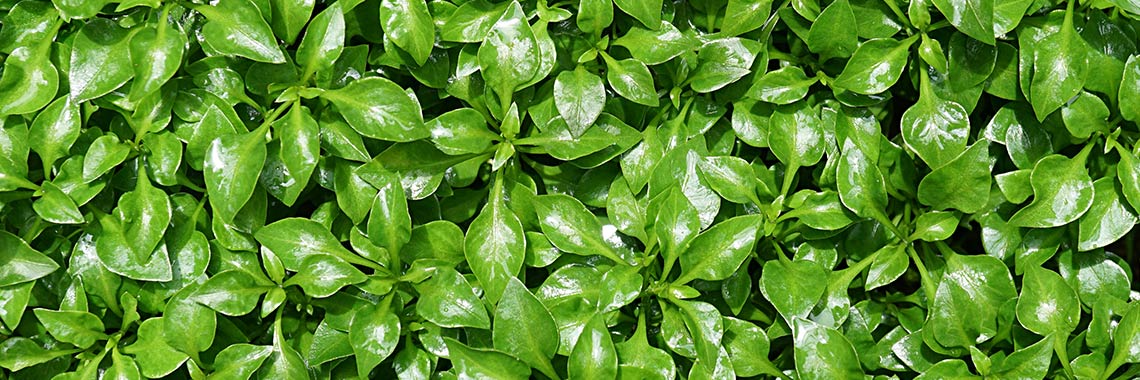
Description
- Watercress (Nasturtium officinale R. Br.) is an aquatic and annual plant belonging to the Brassicaceae family.
PHYSICAL AND ORGANOLEPTIC CHARACTERISTICS
- Chlorophyll gives watercress its green colour (Ek, 2018).
- It contains bioactive compounds such as glucosinolates and their derivatives, isothiocyanates, especially 2-phenylethyl isothiocyanate (PEITC), which give it a bitter taste (Schiess, 2017; Liu, 2018).
- Aldehydes, esters and alcohols are reportedly the volatile compounds most present in watercress. These compounds give it its characteristic “fresh green” aroma (Liu, 2018).
COMPOSITION CHARACTERISTICS (excluding macronutrients, vitamins and minerals)
- Herbs from the Nasturtium family, including watercress, have antioxidant, anticancer, antibacterial, anti-inflammatory and cardio-protective properties. These effects are attributed to the bioactive compounds present: glucosinolates, isothiocyanates, polyphenols (flavonoids, phenolic acids, proanthocyanidins), including carotenoids, terpenes and vitamins (B1, B2, B3, B6, E, C) (Klimek-Szczykutowicz, 2018).
- The high concentration of glucosinolates in watercress extracts is reported to:
- give them chemopreventive properties;
- limit the growth and metastasis of cancer cells and also DNA damage during exercise in adults;
- decrease the frequency of chronic diseases (Voutsina, 2016).
- Furthermore, isothiocyanates, found in watercress, may have beneficial effects in certain diseases such as cancer and autism. Notably, watercress consumption is thought to be associated with a lower prevalence of colorectal cancers in New Zealand (Palliyaguru, 2018).
RAW
The following values are approximate and depend on variety, season, ripeness, cultivation conditions, etc. Watercress is low in energy* as it provides an average of 14.60 calories (kcal) per 100 g, i.e. 61.40 kJ.
COMPOSITION TABLES
For each nutrient, the tables provide information on the content, minimum and maximum values, as well as the percentage of the Dietary Reference Values (DRVs) for 100 g net of watercress, raw.
*Regulation (EC) No 1924/2006 of the European Parliament and of the Council of 20 December 2006 on nutrition and health claims made on foods.
MACRONUTRIENTS
| Constituent (g) | Average content |
Min-Max per 100g |
DRV% |
|---|---|---|---|
| Water | 94,6 | 92,30 - 95,10 | - |
| Fibers | 0,85 | 0,50 - 1,20 | - |
| Carbohydrates | 0,90 | - | 0,35 |
| Sugars | 0,20 | - | 0,22 |
| Lipids | 0,15 | 0,10 - 0,20 | 0,21 |
| Saturated fat | 0,027 | - | 0,14 |
| Protein | 2,09 | 1,88 - 2,30 | 4,18 |
| Constituent (g) | Amount | Min-Max | DRV% |
|---|---|---|---|
| Water | Ciqual 2020 | - | - |
| Fibers | Ciqual 2020 | - | - |
| Carbohydrates | Ciqual 2020 | - | Règlement (UE) N°1169/2011 du parlement Européen et du conseil du 25 octobre 2011 |
| Sugars | Ciqual 2020 | - | Règlement (UE) N°1169/2011 du parlement Européen et du conseil du 25 octobre 2011 |
| Lipids | Ciqual 2020 | - | Règlement (UE) N°1169/2011 du parlement Européen et du conseil du 25 octobre 2011 |
| Saturated fat | Ciqual 2020 | - | Règlement (UE) N°1169/2011 du parlement Européen et du conseil du 25 octobre 2011 |
| Protein | Ciqual 2020 | - | Règlement (UE) N°1169/2011 du parlement Europée et du conseil du 25 octobre 2011 |
Zoom on carbohydrates
- The amount of carbohydrates in watercress (0.90 g per 100 g) is well below the average quantity found in raw vegetables (4.45 g per 100 g).
- Watercress is sugar-free* as it contains less than 0.5 g per 100 g.
Zoom on fibres
- The fibre (0.85 g per 100 g) content of watercress is lower than the average amount found in raw vegetables (2.43 g per 100 g).
Zoom on proteins
- The amount of proteins (2.09 g per 100 g) in watercress is higher than the average amount found in raw vegetables (1.87 g per 100 g).
Zoom on lipids
- The fat content (0.15 g per 100 g) of watercress is lower than the average amount found in raw vegetables (0.56 g per 100 g).
- Watercress is fat-free* as it contains less than 0.5 g per 100 g.
*Regulation (EC) No 1924/2006 of the European Parliament and of the Council of 20 December 2006 on nutrition and health claims made on foods.
MINERALS AND TRACE ELEMENTS
| Constituent | Average content |
Min-Max per 100g |
DRV% |
|---|---|---|---|
| Calcium (mg) | 101 | 69 - 120 | 12,63 |
| Chloride (mg) | - | - | - |
| Copper (mg) | 0,11 | 0,077 - 0,14 | 11 |
| Iron (mg) | 0,90 | 0,20 - 1,60 | 6,43 |
| Iodine (µg) | 13,50 | 4,30 - 47 | 9 |
| Magnesium (mg) | 19 | 17 - 21 | 5,07 |
| Manganese (mg) | 0,37 | 0,24 - 0,50 | 18,50 |
| Phosphorus (mg) | 64,20 | 46,80 - 91,40 | 9,17 |
| Potassium (mg) | 320 | 310 - 330 | 16 |
| Selenium (µg) | - | - | - |
| Sodium (mg) | 50,50 | 41 - 60 | - |
| Zinc (mg) | 0,16 | 0,11 - 0,20 | 1,60 |
| Constituent | Amount | Min-Max | DRV% |
|---|---|---|---|
| Calcium (mg) | Ciqual 2020 | - | Règlement (UE) N°1169/2011 du parlement Européen et du conseil du 25 octobre 2011 |
| Chloride (mg) | Ciqual 2020 | - | Règlement (UE) N°1169/2011 du parlement Européen et du conseil du 25 octobre 2011 |
| Copper (mg) | Ciqual 2020 | - | Règlement (UE) N°1169/2011 du parlement Européen et du conseil du 25 octobre 2011 |
| Iron (mg) | Ciqual 2020 | - | Règlement (UE) N°1169/2011 du parlement Européen et du conseil du 25 octobre 2011 |
| Iodine (µg) | Ciqual 2020 | - | Règlement (UE) N°1169/2011 du parlement Européen et du conseil du 25 octobre 2011 |
| Magnesium (mg) | Ciqual 2020 | - | Règlement (UE) N°1169/2011 du parlement Européen et du conseil du 25 octobre 2011 |
| Manganese (mg) | Ciqual 2020 | - | Règlement (UE) N°1169/2011 du parlement Européen et du conseil du 25 octobre 2011 |
| Phosphorus (mg) | Ciqual 2020 | - | Règlement (UE) N°1169/2011 du parlement Européen et du conseil du 25 octobre 2011 |
| Potassium (mg) | Ciqual 2020 | - | Règlement (UE) N°1169/2011 du parlement Européen et du conseil du 25 octobre 2011 |
| Selenium (µg) | Ciqual 2020 | - | Règlement (UE) N°1169/2011 du parlement Européen et du conseil du 25 octobre 2011 |
| Sodium (mg) | Ciqual 2020 | - | - |
| Zinc (mg) | Ciqual 2020 | - | Règlement (UE) N°1169/2011 du parlement Européen et du conseil du 25 octobre 2011 |
Zoom on minerals and trace elements
- Watercress is source of:
- manganese, as it provides the equivalent of 18.50 % of DRVs, i.e. 0.37 mg per 100 g;
- potassium, as it provides the equivalent of 16% of DRVs, i.e. 320 mg per 100 g.
- It also contains significant amounts of calcium and copper. It provides the equivalent of:
- 12.63% of DRVs for calcium, i.e. 101 mg per 100 g. According to the Ciqual 2020 table, watercress is one of the vegetables that contains the most calcium;
- 11% of DRVs for copper, i.e. 0.11 mg per 100 g.
- The other minerals and trace elements are present in quantities representing less than 10% of DRVs.
VITAMINS
| Constituent | Average content |
Min-Max per 100g |
DRV% |
|---|---|---|---|
| Provitamin A Beta-carotene (µg) | 1 910 | - | - |
| Vitamin A equivalent (µg) | 318,33 | - | 39,79 |
| Vitamin B1 (mg) | 0,095 | 0,09 - 0,10 | 8,64 |
| Vitamin B2 (mg) | 0,11 | 0,10 - 0,12 | 7,86 |
| Vitamin B3 (mg) | 0,40 | 0,20 - 0,60 | 2,50 |
| Vitamin B5 (mg) | 0,21 | 0,10 - 0,31 | 3,50 |
| Vitamin B6 (mg) | 0,13 | - | 9,29 |
| Vitamin B9 (µg) | 9 | - | 4,50 |
| Vitamin C (mg) | 51,50 | 40 - 80 | 64,38 |
| Vitamin E (mg) | 1 | - | 8,33 |
| Vitamin K1 (µg) | 250 | - | 333,33 |
| Constituent | Amount | Min-Max | DRV% |
|---|---|---|---|
| Provitamin A Beta-carotene (µg) | Ciqual 2020 | - | - |
| Vitamin A equivalent (µg) | Calcul à partir de la valeur Provitamine A Béta-carotène* | - | Règlement (UE) N°1169/2011 du parlement Européen et du conseil du 25 octobre 2011 |
| Vitamin B1 (mg) | Ciqual 2020 | - | Règlement (UE) N°1169/2011 du parlement Européen et du conseil du 25 octobre 2011 |
| Vitamin B2 (mg) | Ciqual 2020 | - | Règlement (UE) N°1169/2011 du parlement Européen et du conseil du 25 octobre 2011 |
| Vitamin B3 (mg) | Ciqual 2020 | - | Règlement (UE) N°1169/2011 du parlement Européen et du conseil du 25 octobre 2011 |
| Vitamin B5 (mg) | Ciqual 2020 | - | Règlement (UE) N°1169/2011 du parlement Européen et du conseil du 25 octobre 2011 |
| Vitamin B6 (mg) | Ciqual 2020 | - | Règlement (UE) N°1169/2011 du parlement Européen et du conseil du 25 octobre 2011 |
| Vitamin B9 (µg) | Ciqual 2020 | - | Règlement (UE) N°1169/2011 du parlement Européen et du conseil du 25 octobre 2011 |
| Vitamin C (mg) | Ciqual 2020 | - | Règlement (UE) N°1169/2011 du parlement Européen et du conseil du 25 octobre 2011 |
| Vitamin E (mg) | Ciqual 2020 | - | Règlement (UE) N°1169/2011 du parlement Européen et du conseil du 25 octobre 2011 |
| Vitamin K1 (µg) | Ciqual 2020 | - | Règlement (UE) N°1169/2011 du parlement Européen et du conseil du 25 octobre 2011 |
Zoom on vitamins
- Watercress is high in:
- vitamin K1, as it represents 333.33 % of DRVs, i.e. 250 µg per 100 g. According to the Ciqual 2020 table data, watercress is one of the vegetables that contains the most vitamin K1;
- vitamin C, as it represents 64.38 % of DRVs, i.e. 51.50 mg per 100 g;
- vitamin A, of the carotenoid family, as it represents 39.79 % of DRVs, i.e. 318.33 µg per 100 g.
- It also contains a significant amount of vitamin B6, as it provides the equivalent of 9.29% of DRVs, i.e. 0.13 mg per 100 g.
- The other vitamins are less present in watercress because they represent less than 9% of DRVs.
* Beta Carotene / 6 + retinol
POLYPHENOLS
| Constituent (mg) | Average content |
Min-Max per 100mg |
|---|---|---|
| Flavonoids (mg) | 5 | 5 - 5 |
| of which Flavonols (mg) | 5 | 5 - 5 |
| Lignanes (mg) | 0,15 | 0,13 - 0,19 |
| Total polyphenols | 5,15 | 5,13 - 5,19 |
| Constituent (mg) | Amount | Min-Max |
|---|---|---|
| Flavonoids | Phenol Explorer 3.6 Méthode utilisée : Chromatographie | - |
| of which Flavonols | Phenol Explorer 3.6 Méthode utilisée : Chromatographie | - |
| Lignanes | Phenol Explorer 3.6 Méthode utilisée : Chromatographie | - |
| Total polyphenols | Phenol Explorer 3.6 Méthode utilisée : Chromatographie | - |
Zoom on polyphenols
- Polyphenols are substances with an antioxidant effect.
- The polyphenols in watercress are composed of 78% of quercetin, from the family of flavonols (flavonoids).
Nutrition and health claims
According to the definitions of nutrition claims as presented in Regulation (EC) No 1924/2006 on nutrition and health claims, and in view of the composition of watercress, the following claims may be used:
NUTRITION CLAIMS OF WATERCRESS
- Low in energy (100 g of watercress provide less than 40 kcal)
- Fat-free (100 g of watercress contain less than 0.5 g of fat)
- Sugar-free (100 g of watercress contain less than 0.5 g of sugar)
- High in vitamin K1 (100 g of watercress provide more than 30% of DRVs)
- High in vitamin C (100 g of watercress provide more than 30% of DRVs)
- High in vitamin A (100 g of watercress provide more than 30% of DRVs)
- Source of manganese (100 g of watercress provide more than 15% of DRVs)
- Source of potassium (100 g of watercress provide more than 15% of DRVs)
HEALTH CLAIMS (for a consumption of 100 g of raw watercress)
Vitamin K1
- Vitamin K1 contributes to:
- maintenance of normal bones,
- normal blood clotting.
Vitamin C
- Vitamin C contributes to:
- normal function of the immune system during and after intense physical exercise,
- normal collagen formation for the normal function of blood vessels,
- normal collagen formation for the normal function of bones,
- normal collagen formation for the normal function of cartilage,
- normal collagen formation for the normal function of gums,
- normal collagen formation for the normal function of skin,
- normal collagen formation for the normal function of teeth,
- normal energy-yielding metabolism,
- normal functioning of the nervous system,
- normal psychological function,
- normal function of the immune system,
- protection of cells from oxidative stress,
- reduction of tiredness and fatigue,
- regeneration of the reduced form of vitamin E.
- Vitamin C increases iron absorption.
Vitamin A
- Vitamin A has a role in the process of cell specialisation.
- Vitamin A contributes to:
- maintenance of normal skin,
- maintenance of normal mucous membranes,
- maintenance of normal vision,
- normal iron metabolism,
- normal function of the immune system.
Manganese
- Manganese contributes to:
- normal energy-yielding metabolism,
- maintenance of normal bones,
- normal formation of connective tissues,
- protection of cells from oxidative stress.
Potassium
- Potassium contributes to:
- normal functioning of the nervous system,
- normal muscle function,
- maintenance of normal blood pressure.
References
- Agence nationale de sécurité sanitaire de l’alimentation, de l’environnement et du travail. Table de composition nutritionnelle des aliments Ciqual 2020. Consultée le 20/08/2020 depuis le site internet Ciqual https://ciqual.anses.fr/
- Ek P, Araújo AC, Oliveira SM, Ramos IN, Brandão TRS, Silva CLM. Assessment of nutritional quality and color parameters of convective dried watercress (Nasturtium officinale). Journal of Food Processing and Preservation. 2018;42(2): e13459.
- Klimek-Szczykutowicz M, Szopa A, Ekiert H. Chemical composition, traditional and professional use in medicine, application in environmental protection, position in food and cosmetics industries, and biotechnological studies of Nasturtium officinale (watercress) – a review. Fitoterapia. 2018;129: 283–292.
- Liu Y, Zhang H, Umashankar S, Liang X, Lee HW, Swarup S, et al. Characterization of Plant Volatiles Reveals Distinct Metabolic Profiles and Pathways among 12 Brassicaceae Vegetables. Metabolites. 2018;8(4): 94.
- Neveu V, Perez-Jiménez J, Vos F, Crespy V, du Chaffaut L, Mennen L, Knox C, Eisner R, Cruz J, Wishart D, Scalbert A. (2010) Phenol-Explorer: an online comprehensive database on polyphenol contents in foods. Database, doi: 10.1093/database/bap024. Full text (free access)
- Palliyaguru DL, Yuan J-M, Kensler TW, Fahey JW. Isothiocyanates: translating the power of plants to people. Molecular nutrition & food research. 2018;62(18): e1700965.
- Règlement (CE) N° 1924/2006 du Parlement européen et du Conseil du 20 décembre 2006 concernant les allégations nutritionnelles et de santé portant sur les denrées alimentaires.
- Règlement (UE) N°432/2012 de la Commission du 16 mai 2012 établissant une liste des allégations de santé autorisées portant sur les denrées alimentaires, autres que celles faisant référence à la réduction du risque de maladie ainsi qu’au développement et à la santé infantiles.
- Règlement (UE) n°1169/2011 du Parlement européen et du Conseil du 25 octobre 2011 concernant l’information des consommateurs sur les denrées alimentaires, modifiant les règlements (CE) n°1924/2006 et (CE) n°1925/2006 du Parlement européen et de Conseil et abrogeant la directive 87/250/CEE de la Commission, la directive 90/496/CEE du Conseil, la directive 1999/10/CE de la Commission, la directive 200/13/CE du Parlement européen et du Conseil, les directives 2002/67/CE et 2008/5/CE de la Commission et le règlement (CE) n°608/2004 de la Commission.
- Schiess S, Platz S, Kemper M, Schreiner M, Mewis I, Rohn S, et al. Oral administration of nasturtium affects peptide YY secretion in male subjects. Molecular Nutrition & Food Research. 2017;61(8): 1600886.
- Voutsina N, Payne AC, Hancock RD, Clarkson GJJ, Rothwell SD, Chapman MA, et al. Characterization of the watercress (Nasturtium officinale R. Br.; Brassicaceae) transcriptome using RNASeq and identification of candidate genes for important phytonutrient traits linked to human health. BMC Genomics. 2016;17: 378.




